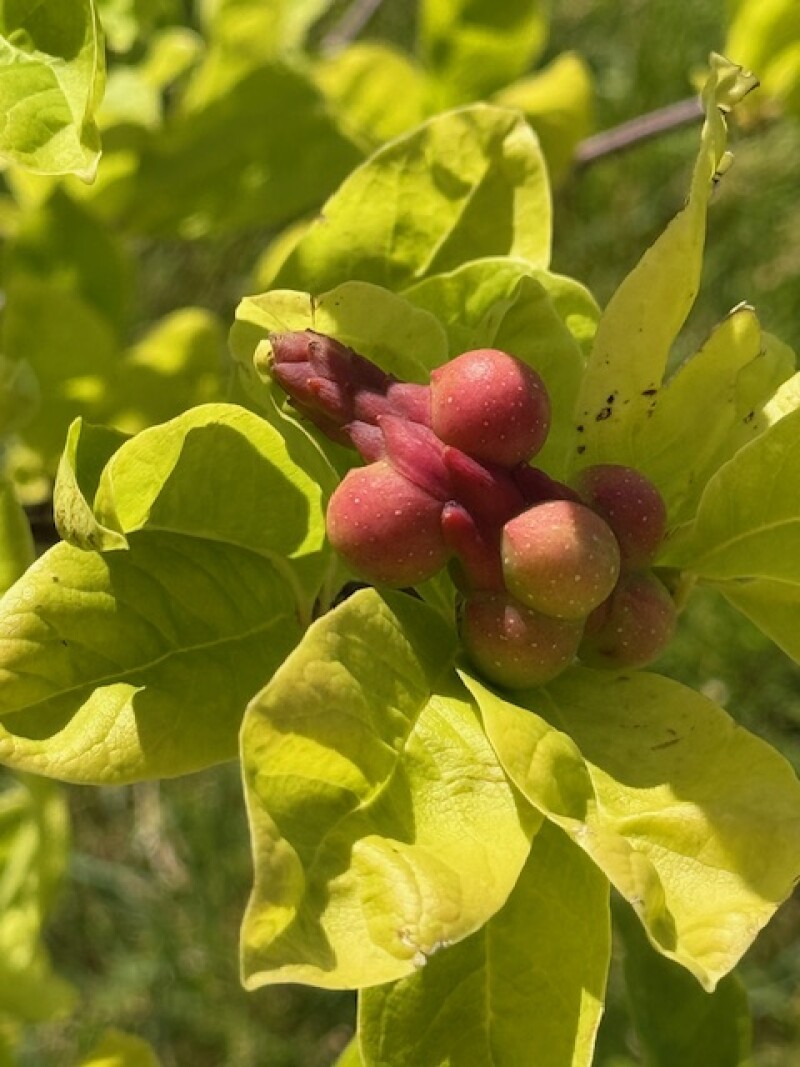Lifestyle
Explore the Resilient Spring Welcome Magnolia and Seasonal Gardening Tips

Gardeners are discovering the unique beauty and resilience of the Spring Welcome Magnolia, a cultivar introduced by North Dakota State University. This winter-hardy tree produces striking pink buds that blossom into pristine white flowers in early spring, making it an attractive addition to landscapes in hardiness Zones 3 and 4.
The Spring Welcome Magnolia is particularly notable for its ability to thrive even in harsh conditions, including winter temperatures dropping below -35 degrees F. This hardy shrub can reach heights of up to 20 feet and can be grown as a single or multi-trunked tree. Its ornamental seed pods, which develop in autumn, provide visual interest throughout the winter months. Garden enthusiasts are encouraged to check with local garden centers about availability for the upcoming spring season, as this plant is on many gardeners’ wish lists.
As the seasons change, many homeowners are contemplating garden maintenance. For those with golden currant bushes that have outgrown their space, a question arises: Is it acceptable to prune these bushes now, or should the trimming wait until spring? According to gardening expert Don Kinzler from NDSU Extension-Cass County, the general advice is to avoid pruning in the fall unless necessary.
Kinzler notes that while waiting until late winter or early spring is typically best for most trees and shrubs, there are exceptions. If the golden currants are obstructing walkways, it is advisable to prune them back to prevent complications with snow removal. Pruning at this time allows the plant to enter dormancy without risking damage from winter conditions.
Another common garden challenge involves managing perennial plants like irises, particularly when they become entangled with weeds such as dandelions and quackgrass. Kinzler shares a practical method for dividing and cleaning up these plants effectively.
To separate unwanted weed roots from the iris clump, gardeners can submerge the plant’s root system in a tub of water. This technique loosens the soil, allowing many weed roots and seeds to wash away. With the soil removed, gardeners can distinguish between the desirable iris roots and invasive species, facilitating a cleaner replanting process.
As gardening season progresses, these insights offer both practical advice and inspiration for maintaining a thriving garden landscape. For more gardening tips, questions can be directed to Don Kinzler at [email protected]. Engaging with local experts can enhance gardening success and enjoyment.
-

 Technology5 months ago
Technology5 months agoDiscover the Top 10 Calorie Counting Apps of 2025
-

 Technology3 weeks ago
Technology3 weeks agoOpenAI to Implement Age Verification for ChatGPT by December 2025
-

 Health3 months ago
Health3 months agoBella Hadid Shares Health Update After Treatment for Lyme Disease
-

 Health4 months ago
Health4 months agoAnalysts Project Stronger Growth for Apple’s iPhone 17 Lineup
-

 Health4 months ago
Health4 months agoErin Bates Shares Recovery Update Following Sepsis Complications
-

 Technology5 months ago
Technology5 months agoDiscover How to Reverse Image Search Using ChatGPT Effortlessly
-

 Technology3 months ago
Technology3 months agoElectric Moto Influencer Surronster Arrested in Tijuana
-

 Technology5 months ago
Technology5 months agoMeta Initiates $60B AI Data Center Expansion, Starting in Ohio
-

 Technology2 months ago
Technology2 months agoDiscover 2025’s Top GPUs for Exceptional 4K Gaming Performance
-

 Technology5 months ago
Technology5 months agoRecovering a Suspended TikTok Account: A Step-by-Step Guide
-

 Health5 months ago
Health5 months agoTested: Rab Firewall Mountain Jacket Survives Harsh Conditions
-

 Lifestyle5 months ago
Lifestyle5 months agoBelton Family Reunites After Daughter Survives Hill Country Floods

















